
A quote from Arthur Miller's "Death of a Salesman" greets us even before we get to the Prologue. The irony is that Pink's central theme is the refutation of the perception that the Internet and all of its on-line access and data have brought us to a death of sales or to a post-sales world. In fact, we are, rather, in an age of ubiquitous sales. We all are in sales now and it is certainly no longer simply the province of the "Willy Lomans."
I think Daniel Pink does a much better job here than in his recent "Drive" by avoiding unhelpful jargon and the creation of distinctions without a difference. In "Drive," he insisted on creating such a tower of babble -- "motivation 3.0," "type-I," "ROE," "if/then contingent rewards," vs. "now/that rewards" -- that we saw the cracks in his premise and not the solid surface of his recommendations and their scientific underpinnings.
As I say, "To Sell is Human" is much stronger. And for our work in communities and community systems from education to economic development, I think there are three particularly apt concepts and tools.
First, none of us -- especially those seeking to engage folks from multiple sectors or to attract and align resources -- can afford to think derisively of sales or sales people. We can mock the no-longer extent or unsuccessful sales practices, perhaps best embodied by the sport-coated pushy car sales person, but we can't separate ourselves from the need to understand, practice and embrace our ever-present role of "moving others."
And second, as I’ve discussed before in my blog (http://www.workingdifferently.org/4/p...), it is crucial in this new pervasive environment of “sales” that we pivot from challenging folks to do something that we want them to do, but rather, frame all of our attempts to move people into a challenge for them to do something that they want to do.
Third, the Pixar Pitch! In order to move others, we need to become much better at clearly stating what it is we want and where it is we want people to go. Pink presents the Pixar Pitch as a prime tool in thinking about this. Pixar Animation Studios, starting with Toy Story, is one of the most successful studios in moviemaking history. Pixar has produced 13 feature films that together have grossed $7.6 Billion. Six of these movies have won the Academy Award for best animated film. And the company has amassed a total of 26 Oscars in all. How do they do it?
There are probably a number of interrelated reasons, but no one will discount the stories themselves. Pixar story artist, Emma Coats has cracked the code and argues that every Pixar film shares the same narrative DNA – a deep structure of storytelling that involves six sequential sentences:
1. Once upon a time there was …
2. Every day …
3. One day …
4. Because of that …
5. Because of that …
6. Until finally …
Take for example the plot of Finding Nemo.
1. Once upon a time there was … a widowed fish, named Marlin, who was extremely protective of his only son, Nemo.
2. Every day … Marlin warned Nemo of the ocean’s dangers and implored him not to swim far away.
3. One day … in an act of defiance, Nemo ignores his father’s warnings and swims into the open water.
4. Because of that … he is captured by a diver and ends up in the fish tank of a dentist in Sydney.
5. Because of that … Marlin sets off on a journey to recover Nemo, enlisting the help of other sea creatures along the way.
6. Until finally … Marlin and Nemo find each other, reunite and learn that love depends on trust.
This six-sentence template is both appealing and supple. For it allows pitchers to take advantage of the well-documented persuasive force of stories but within a framework that forces conciseness and discipline.
Now, let’s bring this to a community example where you are seeking to dramatically improve early childhood reading outcomes.
1. Once upon a time there was … an education crisis haunting our schools and communities across North America.
2. Every day … large percentages of our children were not achieving proficiency in vital literacy skills to the point that some in our community even doubted whether they ever could.
3. One day … we developed a simple and shared definition of what children had to know in order to be ready for school.
4. Because of that … our early childhood centers and parents became better at helping all children enter kindergarten ready to learn
5. Because of that … teachers were free to work more on skill development for each individual child.
6. Until finally … every child, irrespective of ethnic or economic circumstance, became a proficient reader by the end of third grade.
The final concept that Pink leaves us with is the distinction between problem finders and problem solvers. In a community context, a problem solver may say that we don’t have enough funding to do what are programs are set to accomplish, whereas, a problem finder may see that the issue isn’t doing more of what we are doing but the need to work in completely different ways. Here is the central core lesson of what it means to be creative in our communities – to truly work differently … TO UNDERSTAND THE IMPORTANCE OF PROCESS. A whole line of research has found that people, most disposed to creative breakthroughs in art, science or any endeavor, tend to be problem finders. Problem finders sort through vast amounts of information and inputs, often from multiple disciplines or sectors. They experiment with a variety of different approaches. They are willing to switch directions in the course of a project and they often take longer than their problem solver counterparts. But in the end, a transformative outcome is achieved. Think of the George Bernard Shaw quote (famously attributed to Robert Kennedy): to see those things as they are and ask why (problem solver), or see things that never were and ask why not (problem finder). In the work of working differently to achieve collective impact, we rely on the creative, heuristic, problem finding skills of artists more than on the reductive, fragmented activity bias of problem solving technicians
I think Daniel Pink does a much better job here than in his recent "Drive" by avoiding unhelpful jargon and the creation of distinctions without a difference. In "Drive," he insisted on creating such a tower of babble -- "motivation 3.0," "type-I," "ROE," "if/then contingent rewards," vs. "now/that rewards" -- that we saw the cracks in his premise and not the solid surface of his recommendations and their scientific underpinnings.
As I say, "To Sell is Human" is much stronger. And for our work in communities and community systems from education to economic development, I think there are three particularly apt concepts and tools.
First, none of us -- especially those seeking to engage folks from multiple sectors or to attract and align resources -- can afford to think derisively of sales or sales people. We can mock the no-longer extent or unsuccessful sales practices, perhaps best embodied by the sport-coated pushy car sales person, but we can't separate ourselves from the need to understand, practice and embrace our ever-present role of "moving others."
And second, as I’ve discussed before in my blog (http://www.workingdifferently.org/4/p...), it is crucial in this new pervasive environment of “sales” that we pivot from challenging folks to do something that we want them to do, but rather, frame all of our attempts to move people into a challenge for them to do something that they want to do.
Third, the Pixar Pitch! In order to move others, we need to become much better at clearly stating what it is we want and where it is we want people to go. Pink presents the Pixar Pitch as a prime tool in thinking about this. Pixar Animation Studios, starting with Toy Story, is one of the most successful studios in moviemaking history. Pixar has produced 13 feature films that together have grossed $7.6 Billion. Six of these movies have won the Academy Award for best animated film. And the company has amassed a total of 26 Oscars in all. How do they do it?
There are probably a number of interrelated reasons, but no one will discount the stories themselves. Pixar story artist, Emma Coats has cracked the code and argues that every Pixar film shares the same narrative DNA – a deep structure of storytelling that involves six sequential sentences:
1. Once upon a time there was …
2. Every day …
3. One day …
4. Because of that …
5. Because of that …
6. Until finally …
Take for example the plot of Finding Nemo.
1. Once upon a time there was … a widowed fish, named Marlin, who was extremely protective of his only son, Nemo.
2. Every day … Marlin warned Nemo of the ocean’s dangers and implored him not to swim far away.
3. One day … in an act of defiance, Nemo ignores his father’s warnings and swims into the open water.
4. Because of that … he is captured by a diver and ends up in the fish tank of a dentist in Sydney.
5. Because of that … Marlin sets off on a journey to recover Nemo, enlisting the help of other sea creatures along the way.
6. Until finally … Marlin and Nemo find each other, reunite and learn that love depends on trust.
This six-sentence template is both appealing and supple. For it allows pitchers to take advantage of the well-documented persuasive force of stories but within a framework that forces conciseness and discipline.
Now, let’s bring this to a community example where you are seeking to dramatically improve early childhood reading outcomes.
1. Once upon a time there was … an education crisis haunting our schools and communities across North America.
2. Every day … large percentages of our children were not achieving proficiency in vital literacy skills to the point that some in our community even doubted whether they ever could.
3. One day … we developed a simple and shared definition of what children had to know in order to be ready for school.
4. Because of that … our early childhood centers and parents became better at helping all children enter kindergarten ready to learn
5. Because of that … teachers were free to work more on skill development for each individual child.
6. Until finally … every child, irrespective of ethnic or economic circumstance, became a proficient reader by the end of third grade.
The final concept that Pink leaves us with is the distinction between problem finders and problem solvers. In a community context, a problem solver may say that we don’t have enough funding to do what are programs are set to accomplish, whereas, a problem finder may see that the issue isn’t doing more of what we are doing but the need to work in completely different ways. Here is the central core lesson of what it means to be creative in our communities – to truly work differently … TO UNDERSTAND THE IMPORTANCE OF PROCESS. A whole line of research has found that people, most disposed to creative breakthroughs in art, science or any endeavor, tend to be problem finders. Problem finders sort through vast amounts of information and inputs, often from multiple disciplines or sectors. They experiment with a variety of different approaches. They are willing to switch directions in the course of a project and they often take longer than their problem solver counterparts. But in the end, a transformative outcome is achieved. Think of the George Bernard Shaw quote (famously attributed to Robert Kennedy): to see those things as they are and ask why (problem solver), or see things that never were and ask why not (problem finder). In the work of working differently to achieve collective impact, we rely on the creative, heuristic, problem finding skills of artists more than on the reductive, fragmented activity bias of problem solving technicians
To be tweeted links to my new posts -- blog, book reviews (both nonfiction and fiction), data or other recommended tools -- either go to Twitter.com and follow me @jcrubicon, or just go to my Home page and click on the Twitter button on the right, just above the tweet stream, and follow me @jcrubicon.
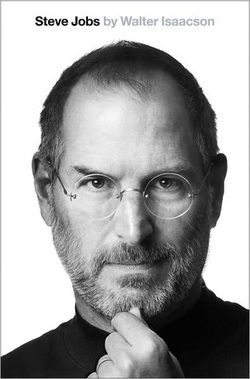
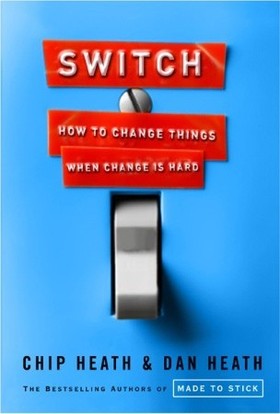
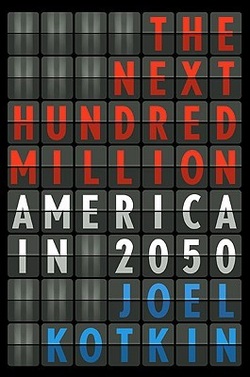
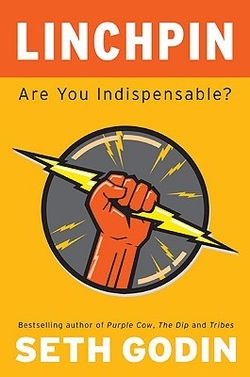
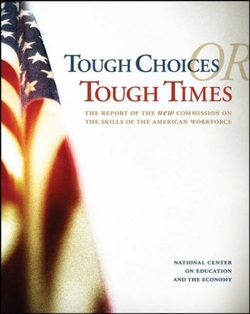
 RSS Feed
RSS Feed
